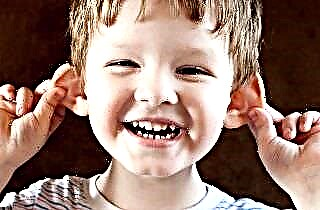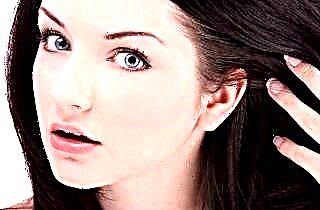The auricle is only the outer part of the most complex acoustic apparatus, with the help of which a person acquires the ability to hear and distinguish sounds. The ear, which at first glance seems so simple, has several basic elements, only a well-coordinated and flawless operation of which allows you to have 100% hearing. In turn, they are also divided into smaller components, when damaged, such serious problems as tinnitus, hearing loss and even complete deafness arise. What does the anatomy of the human auricle look like?
General structure
 It is important to understand that the auricle is the largest visible part of the ear, the main function of which is to pick up sound vibrations from the environment. Together with the external auditory canal, it forms a tandem, which in medicine is called the external ear. It also performs a protective function, preventing particles of dust, dirt and pathogens from entering the ear.
It is important to understand that the auricle is the largest visible part of the ear, the main function of which is to pick up sound vibrations from the environment. Together with the external auditory canal, it forms a tandem, which in medicine is called the external ear. It also performs a protective function, preventing particles of dust, dirt and pathogens from entering the ear.
The structure of the auricle is quite simple. It consists of cartilaginous tissue of a complex configuration, forming various protrusions and curls, as well as the skin-fatty lower part - the lobes. The auricle is attached to the head in the region of the temporal bone and is held in place with the help of muscles, which in most people are rudimentary and have lost the ability to contract.
The shape and size of the auricles differs from person to person. The outer ear can have a rounded or elongated shape, large or small lobe, adjacent to the head, or protruding to the side. This does not affect the ability to clearly hear sounds.

Interestingly, human auricles have an individual structure and a person can be identified as clearly from an ear print as from a fingerprint.
Personalization according to the structure of the auricle is possible due to the different location of the cartilaginous tissue, which forms:
- curl - forms the outer edge of the ear, located from the auditory opening to the earlobe;
- antihelix - a cartilaginous arch inside the auricle, creating its bend;
- tragus - cartilaginous protrusion at the base of the temporal bone;
 antigus - a similar protrusion near the auditory opening at the base of the antihelix;
antigus - a similar protrusion near the auditory opening at the base of the antihelix;- interguscular notch - a small notch between the tragus and the antigus.
The curl of the auricle is conventionally divided into a leg - that part that is located near the head from the auditory opening to its highest point, and a tail that ends at the very lobe. On the curl is another rudiment left over from animal origin. The Darwin's tubercle on the auricle is a more or less pronounced cartilaginous formation that denoted the pointed tip of the ear in animals.
The antihelix has two thin cartilaginous layers connecting it to the curl: the medial and lateral peduncles. They play the role of stiffening ribs, allowing the ear to keep its shape well.
Such a structure of the human auricle provides the strength and elasticity of the entire structure, allows you to sleep on your side and wear hats without fear for the integrity of your ears.
Innervation and blood circulation
 The sensitivity of the auricle is provided by the dilated branches of the three main nerves: the vagus, cranial and trigeminal. In addition, the endings of other smaller nerves are located there. Therefore, the entire auricle is highly sensitive and punctures at any point are quite painful, especially in the area of the tragus. Piercing, which is fashionable in our time, is not only an unpleasant procedure, but can also lead to the development of diseases of the internal organs due to constant irritation of the nerve endings.
The sensitivity of the auricle is provided by the dilated branches of the three main nerves: the vagus, cranial and trigeminal. In addition, the endings of other smaller nerves are located there. Therefore, the entire auricle is highly sensitive and punctures at any point are quite painful, especially in the area of the tragus. Piercing, which is fashionable in our time, is not only an unpleasant procedure, but can also lead to the development of diseases of the internal organs due to constant irritation of the nerve endings.
Blood supply is provided by several main arteries: the superficial temporal, parotid, occipital, and posterior auricular. The earlobe contains a whole network of small capillaries that feed the adipose tissue. Because there are many large and small blood vessels in the ear, they easily give off heat.
Therefore, it is so important to protect them from hypothermia and frostbite in cold weather. Delicate skin is quickly irritated, dry out and begins to peel off.
Features of the structure of the ear
The fact that the auricle contains projections of all the most important organs and systems of the human body was known many years ago. This was used by ancient healers, acting with needles on specific points on the auricle. This method of treatment was called acupuncture. But that's not all - modern scientists went further and proved the connection between the structure of the auricle and various traits of a person's character, as well as his tendency to various diseases.
Here are some well established correlations:
 an elongated and fleshy earlobe is a sign of extraordinary mental abilities;
an elongated and fleshy earlobe is a sign of extraordinary mental abilities;- a reduced earlobe speaks of a narrow mind, especially in combination with a clearly distinguished Darwinian tubercle;
- wrinkled earlobe - gives out a tendency to cardiovascular diseases, speaks of insufficient blood circulation;
- a small auricle is usually in people with a calm and restrained character, persistent, in good health;
- a strongly protruding antihelix speaks of a high spiritual level of personality, as well as good creative abilities.
The color of the auricle is also important. In a healthy person, it is flesh-colored or white-pink. Cyanosis indicates a lack of blood circulation, heart and lung problems. Red ears can signal high blood pressure, nervousness, and also - a tendency to alcoholism.
Untreated diseases of the external ear usually heal quickly and do not cause complications.

 antigus - a similar protrusion near the auditory opening at the base of the antihelix;
antigus - a similar protrusion near the auditory opening at the base of the antihelix; an elongated and fleshy earlobe is a sign of extraordinary mental abilities;
an elongated and fleshy earlobe is a sign of extraordinary mental abilities;

